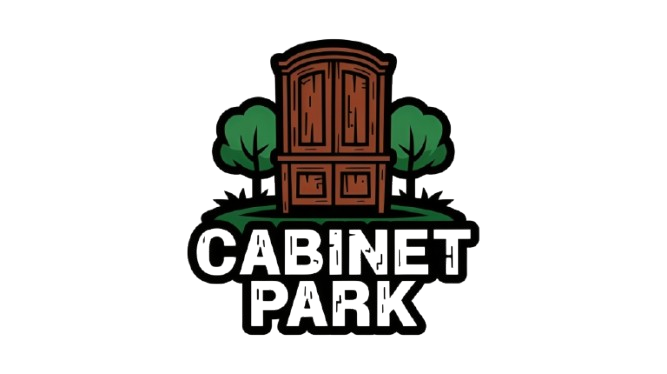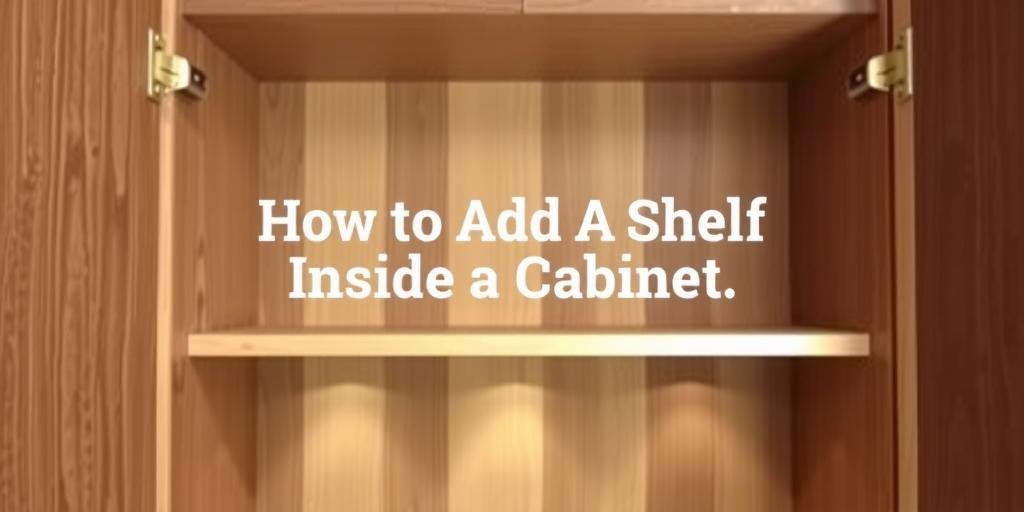Adding an extra shelf inside your cabinet is a simple and cost-effective way to maximize storage space and improve organization in your kitchen, bathroom, or office. Whether you’re a DIY beginner or a seasoned home improver, this comprehensive guide will walk you through how to add a shelf inside a cabinet with confidence and ease.
Benefits of Adding a Shelf Inside a Cabinet
Before diving into the project, it’s important to understand the advantages of adding an interior shelf:
- Maximize vertical space that often goes unused
- Improve organization by creating separate zones for items
- Increase accessibility so items are easier to reach
- Customize storage to fit your specific needs
- Enhance cabinet functionality without a costly remodel
Tools and Materials You Will Need
Gathering the right tools and materials beforehand will make the process smoother and more efficient.
| Tools | Materials |
|---|---|
|
|
Types of Shelf Supports
Choosing the right support system is crucial for stability and ease of installation. Here are the most common methods:
Adjustable Shelf Pins
Ideal for cabinets with pre-drilled holes, adjustable shelf pins allow flexibility in shelf height. They’re easy to install and reposition.
Wooden Cleats
Strips of wood attached to the cabinet sides create a sturdy resting place for fixed shelves. Great for heavier loads.
Metal Brackets
Mounted on the interior walls, brackets provide strong support and are suitable for both fixed and removable shelves.
Step-by-Step Guide to Adding a Shelf Inside a Cabinet
Step 1: Measure the Cabinet Interior
Accurate measurements ensure a perfect fit. Use a measuring tape to determine:
- Width: Side to side inside the cabinet
- Depth: Front edge to back panel
- Height: Vertical space to decide shelf placement
Subtract about 1/8 inch from the width for easy installation and removal.
Step 2: Select and Prepare the Shelf Material
Choose a material that matches your cabinet’s style and load requirements:
- Plywood: Durable and budget-friendly
- MDF: Smooth surface, ideal for painting
- Solid Wood: Strong and attractive
Cut the board to the measured size using a saw, or have it cut at a hardware store. Sand edges smooth and apply paint or stain if desired.
Step 3: Decide on Shelf Height and Mark Positions
Consider the items you wish to store to determine shelf height. Use a pencil and level to mark both sides of the cabinet at the desired shelf position. This ensures a level shelf and balanced support.
Step 4: Install Shelf Supports
Depending on your chosen method:
- Adjustable Pins: Insert into pre-drilled holes at marked height.
- Cleats: Cut two wooden strips matching shelf depth minus door clearance. Attach them to the cabinet’s inside walls with wood screws or finish nails, ensuring level alignment.
- Metal Brackets: Screw brackets into the marked spots on the side walls.
Step 5: Place the Shelf
Gently lower the prepared shelf onto the supports. Check with a level to confirm it sits evenly. If necessary, adjust supports to correct any tilt.
Step 6: Secure the Shelf (Optional)
For a fixed shelf, you can secure it further by:
- Adding screws from the top into the cleats or brackets
- Using wood glue along the edges for extra stability
If you want the shelf to remain adjustable, leave it resting on the supports without additional fixing.
Tips for a Professional Finish
- Use paint or stain to match the new shelf with existing cabinetry for a seamless look.
- Edge banding can cover exposed plywood edges for a polished appearance.
- Use quality materials that can bear the intended weight.
- Double-check measurements before cutting or installing.
- Label drill holes carefully to avoid misalignment.
Common Mistakes to Avoid
- Skipping measurements: Leads to ill-fitting shelves.
- Using weak supports: Can cause sagging or collapse.
- Not leveling supports: Results in a tilted shelf.
- Overloading the shelf: Always consider load capacity.
- Damaging cabinet walls: Drill carefully to avoid splintering or cracks.
Alternative Shelf Installation Methods
If traditional methods don’t suit your needs, consider these alternatives:
Using Shelf Kits
Pre-fabricated kits include boards and supports, simplifying installation. They’re ideal for beginners or quick fixes.
Adding Pull-Out Shelves
Upgrade storage with sliding shelves or drawers for easier access. Requires additional hardware but greatly improves functionality.
Installing Wire Shelving
Wire racks provide lightweight, adjustable options popular in pantry cabinets or closets. Installation is simple with minimal tools.
Estimated Time and Cost
| Task | Estimated Time | Estimated Cost |
|---|---|---|
| Measuring and planning | 15-20 minutes | $0 |
| Purchasing materials | 30-60 minutes | $15-$50 (depending on materials) |
| Cutting and finishing shelf | 30-60 minutes | $0-$10 (if finishing supplies needed) |
| Installing supports and shelf | 30-45 minutes | $0 |
| Total | 1.5-3 hours | $15-$60 |
Maintenance and Care Tips
- Regularly check shelf supports for signs of loosening or wear.
- Avoid overloading the shelf beyond its capacity.
- Clean spills promptly to prevent warping or damage.
- Repaint or refinish as needed to maintain appearance.
- Adjust shelf position if using adjustable supports to suit changing needs.
Frequently Asked Questions
Can I add a shelf to any cabinet?
Yes, most cabinets can accommodate additional shelves, provided there’s enough vertical space and the cabinet structure is strong enough to support the added weight.
What is the best material for cabinet shelves?
Plywood is commonly recommended due to its strength and affordability. Solid wood offers durability and aesthetics, while MDF is suitable for painted finishes but less moisture-resistant.
How much weight can a cabinet shelf hold?
This depends on the material thickness, type of supports, and span length. Typically, a 3/4-inch plywood shelf supported properly can hold 50-100 pounds evenly distributed.
Should I fix the shelf permanently or leave it adjustable?
If you need flexibility, use adjustable pins or brackets. For heavy items or fixed storage, secure the shelf with cleats or screws for added stability.
Do I need power tools for this project?
While a drill and saw can speed up the process, it’s possible to complete the project with hand tools such as a screwdriver and handsaw, especially if materials are pre-cut.
Is it necessary to paint or finish the shelf?
Finishing is optional but recommended for durability and aesthetics. A painted or sealed shelf is easier to clean and better protected against moisture.
How far apart should shelves be inside a cabinet?
This depends on the items you plan to store. For example, spacing of 10-12 inches works well for plates, while larger items may require more vertical clearance.
Conclusion
Adding a shelf inside a cabinet is a straightforward DIY project that can dramatically improve your storage capacity and organization. With careful planning, the right materials, and attention to detail, you can create a sturdy and attractive shelf tailored to your needs. This upgrade not only enhances functionality but also adds value to your home with minimal investment.
By following this step-by-step guide, you’re now equipped with the knowledge to confidently add a shelf inside any cabinet, making your living spaces more efficient and clutter-free.

